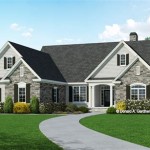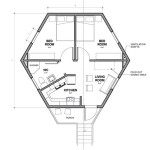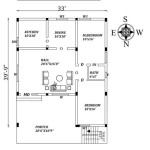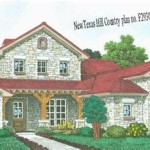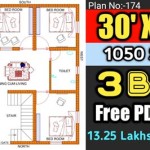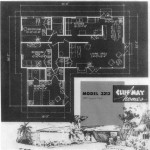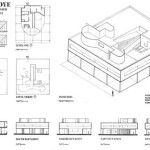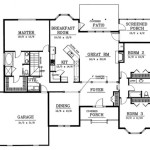Indoor Dog House Plans: Creating a Comfortable Sanctuary for Your Canine Companion
Providing a dog with a designated space within the home offers numerous benefits, ranging from a sense of security to a reduction in anxiety. An indoor dog house serves as a personalized den, a retreat where a dog can feel safe, comfortable, and in control of its environment. Choosing or designing the right indoor dog house involves careful consideration of several factors, including the dog's size, breed, temperament, and the available space within the home. This article explores various aspects of indoor dog house plans, providing insights into design options, material selection, and construction techniques, with the aim of helping individuals create a functional and aesthetically pleasing sanctuary for their beloved canine companions.
The concept of an indoor dog house extends beyond a simple crate. While crates serve their purpose, particularly during training and travel, an indoor dog house aims to integrate seamlessly into the home's décor while providing a more spacious and personalized environment. This can be especially beneficial for dogs prone to anxiety, separation anxiety, or those simply seeking a quiet retreat from the hustle and bustle of family life.
Understanding Dog House Design Considerations
Before embarking on the construction or purchase of an indoor dog house, a thorough understanding of design considerations is crucial. These considerations encompass the dog's needs, the available space, and the desired aesthetic.
Size and Space: The most fundamental aspect of dog house design is size. The dog house should be large enough for the dog to stand up, turn around, and lie down comfortably without feeling cramped. Measuring the dog while standing and lying down is essential to determining the minimum internal dimensions. Additionally, consider the dog's breed and potential growth rate, especially when designing for puppies. The dog house's footprint should also be proportionate to the room in which it will be placed, avoiding obstruction of walkways or overwhelming the space.
Ventilation: Adequate ventilation is paramount for maintaining a comfortable and healthy environment inside the dog house. Designs should incorporate openings that allow for air circulation, preventing the build-up of moisture and unpleasant odors. This can be achieved through strategically placed windows, vents, or an open doorway. If using windows, ensure they are covered with mesh or a similar material to prevent the dog from escaping or injuring itself.
Accessibility: Ease of access is another key design consideration. The entrance should be large enough for the dog to enter and exit comfortably, without having to crouch excessively. The height of the entrance should be low enough to allow easy access for older dogs or those with mobility issues. For puppies, consider a slightly higher entrance to prevent them from easily wandering out, while also being mindful of their growing size.
Durability and Safety: The chosen materials and construction methods must ensure the dog house's durability and safety. The structure should be sturdy enough to withstand the dog's weight and movements without collapsing or becoming unstable. Avoid using materials that are toxic or easily chewed, as this can pose a health hazard to the dog. All edges and corners should be rounded or sanded smooth to prevent injury. The design should also be free of any potential hazards, such as protruding nails or sharp edges.
Material Selection and Construction Techniques
The choice of materials significantly impacts the dog house's appearance, durability, and overall functionality. Common materials used in indoor dog house construction include wood, plywood, plastic, and metal. Each material offers distinct advantages and disadvantages.
Wood: Wood is a popular choice due to its aesthetic appeal, versatility, and ease of workability. Solid wood, such as pine or cedar, provides a natural and warm look, while plywood offers a more cost-effective alternative. When using wood, ensure it is properly sealed or painted to protect it from moisture and wear. Cedar is naturally resistant to insects and rot, making it a particularly good choice for outdoor use or in areas prone to moisture.
Plywood: Plywood is a manufactured wood product composed of layers of wood veneer glued together. It is a strong and stable material that is less prone to warping than solid wood. Plywood is available in various thicknesses and grades, with higher grades offering a smoother surface and fewer imperfections. When using plywood, ensure the edges are properly sealed to prevent moisture penetration and splintering.
Plastic: Plastic dog houses are lightweight, durable, and easy to clean. They are often molded into pre-fabricated shapes, simplifying the assembly process. Plastic is resistant to moisture and insects, making it a suitable choice for dogs that shed or drool excessively. However, plastic may not be as aesthetically pleasing as wood and can be prone to scratching.
Metal: Metal dog houses are typically used for crates or kennels, but can also be incorporated into custom-built dog houses. Metal is strong, durable, and easy to clean. However, it can be cold and uncomfortable for dogs, especially in colder climates. If using metal, ensure it is coated with a non-toxic finish to prevent rust and corrosion. Padding or bedding should also be provided to ensure the dog's comfort.
Construction Techniques: The construction techniques used will depend on the chosen materials and design. Wood dog houses can be assembled using screws, nails, or glue. Plywood can be cut and shaped using a saw and then fastened together using screws or nails. Plastic dog houses typically snap together or are assembled using screws. Regardless of the chosen construction method, ensure the joints are strong and secure to prevent the dog house from falling apart.
Integrating the Dog House into Your Home's Décor
The indoor dog house should not only be functional but also aesthetically pleasing, seamlessly blending into the home's décor. This can be achieved through careful consideration of the dog house's style, color, and placement.
Style and Design: The dog house's style should complement the existing décor of the room. For example, a rustic-style dog house made from reclaimed wood would be a good fit for a farmhouse-style home, while a modern-style dog house with clean lines and minimalist design would be more suitable for a contemporary home. The dog house can also be designed to mimic existing furniture, such as a small cabinet or side table.
Color and Finish: The color and finish of the dog house should also complement the room's color scheme. Neutral colors, such as white, gray, or beige, are versatile and can be easily incorporated into any décor. Alternatively, the dog house can be painted or stained to match existing furniture or accent colors. Consider using non-toxic paints and finishes to ensure the dog's safety.
Placement: The placement of the dog house is crucial for both the dog's comfort and the overall aesthetic of the room. The dog house should be placed in a quiet and comfortable location, away from high-traffic areas. Avoid placing the dog house near windows or doors that may expose the dog to drafts or excessive noise. The dog house should also be easily accessible to the dog, allowing it to retreat to its sanctuary whenever it feels the need.
Personalization: Adding personal touches to the dog house can make it even more comfortable and inviting for the dog. This can include adding a soft and comfortable bed, blankets, or toys. The dog's name can also be added to the dog house, further personalizing the space. Consider adding a small rug or mat outside the dog house to prevent the dog from tracking dirt into the house.
By carefully considering these design elements, owners can create an indoor dog house that is both functional and aesthetically pleasing, providing their canine companions with a comfortable and secure sanctuary within the home. Furthermore, regular maintenance and cleaning of the dog house are essential for maintaining a hygienic and comfortable environment for the dog.
In conclusion, building or purchasing an indoor dog house represents a valuable investment into a dog's well-being, providing a dedicated space that promotes security and reduces anxiety. The process requires thoughtful planning, careful material selection, and meticulous attention to detail. By addressing the dog's specific needs and integrating the structure seamlessly into the home's environment, individuals can create a haven where their furry friends can truly thrive.
:strip_icc()/ana-crate-5829f7a73df78c6f6a1edf80.jpg?strip=all)
14 Free Diy Dog House Plans Anyone Can Build

13 Diy Doghouse Plans And Ideas The House Of Wood

14 Diy Dog Houses How To Build A House Plans Blueprints

How To Build A Diy Indoor Dog House Thediyplan
:strip_icc()/instrucables2-5b437eb6c9e77c0037560894.jpg?strip=all)
14 Free Diy Dog House Plans Anyone Can Build

How To Build A Diy Indoor Dog House Thediyplan

15 Diy Dog House Ideas For Your Furry Friend Bob Vila

25 Stylish Indoor Dog Houses That Any Pooch Will Fall In Love With House Plans Wooden

Diy Indoor Dog House Plans Crate Wood

How To Build A Diy Indoor Dog House Thediyplan

